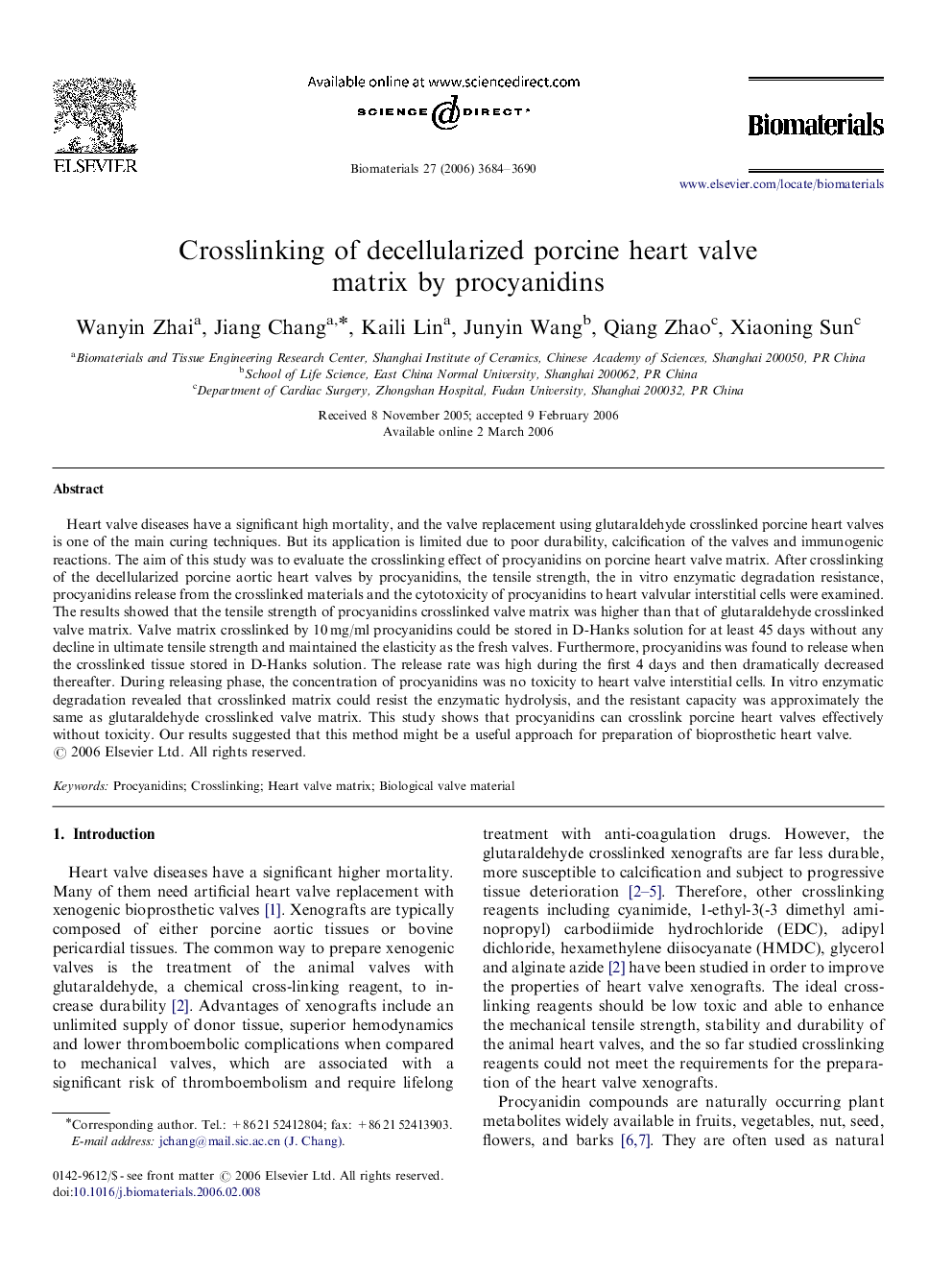| Article ID | Journal | Published Year | Pages | File Type |
|---|---|---|---|---|
| 12055 | Biomaterials | 2006 | 7 Pages |
Heart valve diseases have a significant high mortality, and the valve replacement using glutaraldehyde crosslinked porcine heart valves is one of the main curing techniques. But its application is limited due to poor durability, calcification of the valves and immunogenic reactions. The aim of this study was to evaluate the crosslinking effect of procyanidins on porcine heart valve matrix. After crosslinking of the decellularized porcine aortic heart valves by procyanidins, the tensile strength, the in vitro enzymatic degradation resistance, procyanidins release from the crosslinked materials and the cytotoxicity of procyanidins to heart valvular interstitial cells were examined. The results showed that the tensile strength of procyanidins crosslinked valve matrix was higher than that of glutaraldehyde crosslinked valve matrix. Valve matrix crosslinked by 10 mg/ml procyanidins could be stored in D-Hanks solution for at least 45 days without any decline in ultimate tensile strength and maintained the elasticity as the fresh valves. Furthermore, procyanidins was found to release when the crosslinked tissue stored in D-Hanks solution. The release rate was high during the first 4 days and then dramatically decreased thereafter. During releasing phase, the concentration of procyanidins was no toxicity to heart valve interstitial cells. In vitro enzymatic degradation revealed that crosslinked matrix could resist the enzymatic hydrolysis, and the resistant capacity was approximately the same as glutaraldehyde crosslinked valve matrix. This study shows that procyanidins can crosslink porcine heart valves effectively without toxicity. Our results suggested that this method might be a useful approach for preparation of bioprosthetic heart valve.
